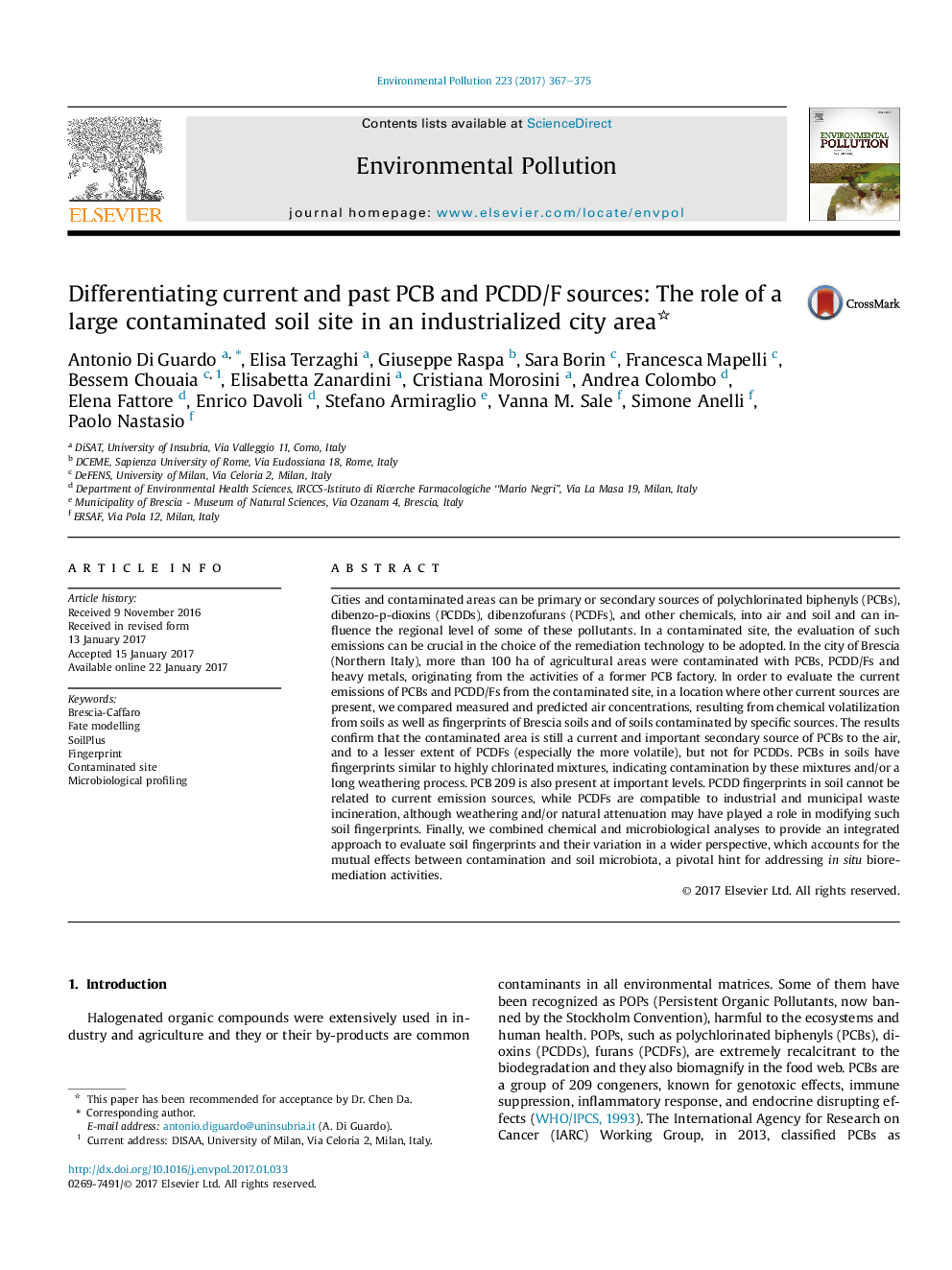| کد مقاله | کد نشریه | سال انتشار | مقاله انگلیسی | نسخه تمام متن |
|---|---|---|---|---|
| 5749316 | 1619150 | 2017 | 9 صفحه PDF | دانلود رایگان |

- Cities and contaminated areas can be primary or secondary sources of PCBs and PCDDs/Fs.
- A methodology to evaluate such emission is proposed to select further activities.
- Models are used to predict air concentration fingerprint to evaluate those measured.
- Fingerprints of POPs in soil and of soils affected by single sources are compared.
- Soil bacterial communities profiling is consistent with pollution fingerprinting.
Cities and contaminated areas can be primary or secondary sources of polychlorinated biphenyls (PCBs), dibenzo-p-dioxins (PCDDs), dibenzofurans (PCDFs), and other chemicals, into air and soil and can influence the regional level of some of these pollutants. In a contaminated site, the evaluation of such emissions can be crucial in the choice of the remediation technology to be adopted. In the city of Brescia (Northern Italy), more than 100Â ha of agricultural areas were contaminated with PCBs, PCDD/Fs and heavy metals, originating from the activities of a former PCB factory. In order to evaluate the current emissions of PCBs and PCDD/Fs from the contaminated site, in a location where other current sources are present, we compared measured and predicted air concentrations, resulting from chemical volatilization from soils as well as fingerprints of Brescia soils and of soils contaminated by specific sources. The results confirm that the contaminated area is still a current and important secondary source of PCBs to the air, and to a lesser extent of PCDFs (especially the more volatile), but not for PCDDs. PCBs in soils have fingerprints similar to highly chlorinated mixtures, indicating contamination by these mixtures and/or a long weathering process. PCB 209 is also present at important levels. PCDD fingerprints in soil cannot be related to current emission sources, while PCDFs are compatible to industrial and municipal waste incineration, although weathering and/or natural attenuation may have played a role in modifying such soil fingerprints. Finally, we combined chemical and microbiological analyses to provide an integrated approach to evaluate soil fingerprints and their variation in a wider perspective, which accounts for the mutual effects between contamination and soil microbiota, a pivotal hint for addressing in situ bioremediation activities.
190
Journal: Environmental Pollution - Volume 223, April 2017, Pages 367-375